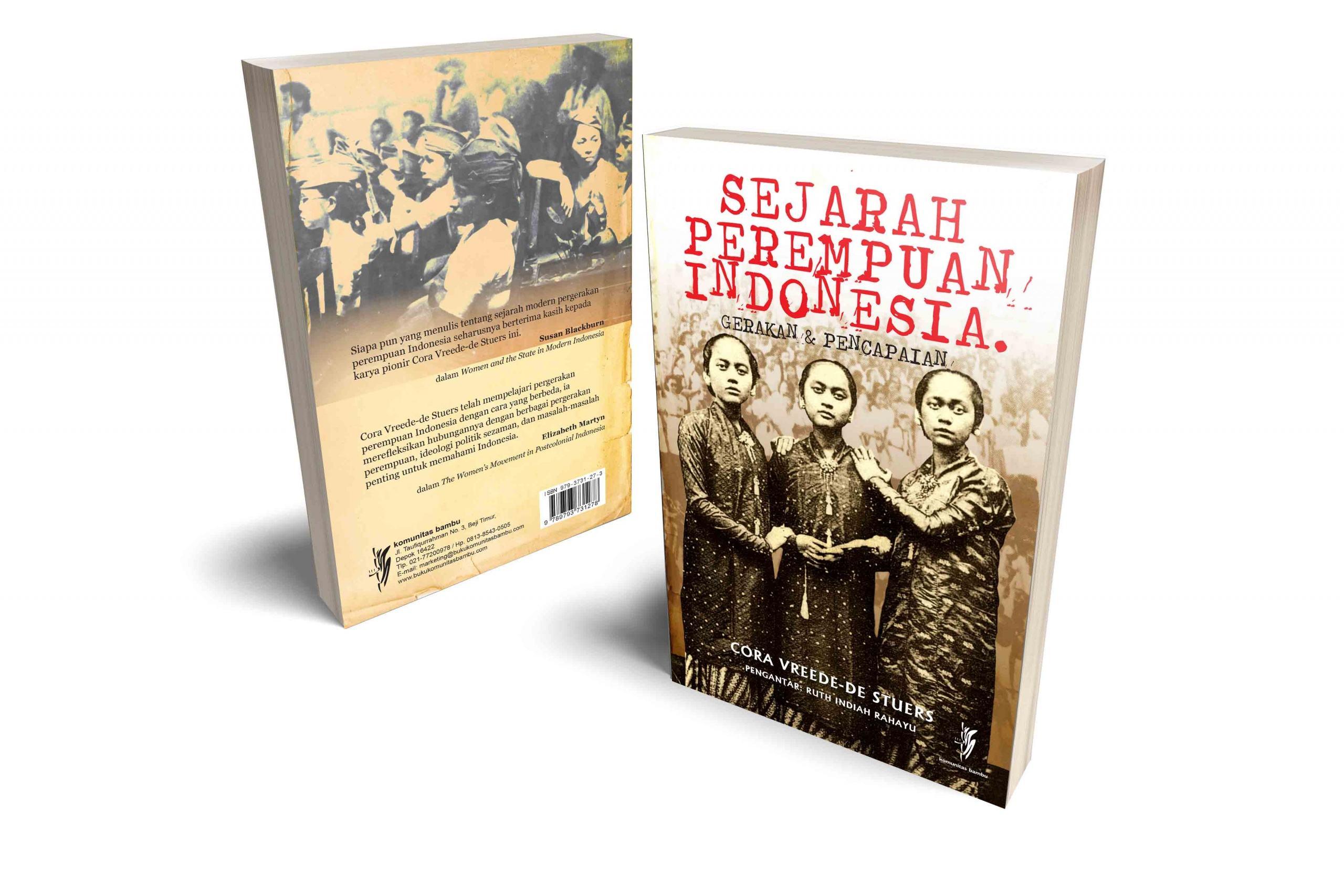
Sejarah Perempuan Indonesia: Gerakan & Pencapaian
When speaking of gender issues and their relation to the position of women in a country like Indonesia, it is usually important to discuss ethnicity and nationalism. Nira Yuval-Davis, the writer of Gender and nation (London: Stage, 1997) also recognized the strong relation between gender, ethnicity, and nationalism and she argues that “One of the most important differences among women is their membership in ethnic and national collectivities […] these can affect […] the status and power of some women versus others” (Nira Yuval-Davis 1997: 11). It seems that Cora Vreede-De Stuers also uses this concept in her book Sejarah perempuan Indonesia; Gerakan dan pencapaian. This book, which originally was a PhD thesis in French and defended in the Faculty of Letters, University of Paris (1957), Vreede-de Stuers focuses on the unity of women throughout Indonesia in their fight to achieve emancipation (p. 1). She further mentions that “Indonesian women” refers to women throughout the archipelago now known as the Republic of Indonesia (p. 2).
It is only natural that she finds it necessary to provide a definition of the Indonesian women she refers to in the introduction considering that the research, which is the basis of this book, was conducted quite some time ago and under a different administration. Her research commenced in the colonial period (1937-1938) when Indonesia was still a colony under the Dutch Indies Government and ended after Indonesia had reached independence (1947-1949 and 1950-1955) when the area of research had become part of the Republic of Indonesia. It is fair to say that Vreede-De Stuers’ book, which was first published in 1960 in an English edition entitled The Indonesian woman; Struggles and achievements, was a pioneering study of the modern history of the Indonesian women’s emancipation movement. In her attempt to relate the development of this movement, which is acknowledged as the first feminist movement in Indonesia, Vreede-De Stuers focuses on marriage and education.
These are reasonable choices considering that both issues were the main agenda of activity of Indonesian women organizations at that time. These two main issues are believed to be at the root of all the problems concerning the marginalization of the position of Indonesian women in the public as well as in the private domain. Indonesian women who joined various organizations, such as the Perikatan Perempuan Indonesia (PPI) which was established as a result of the first Indonesian Women Congress in Yogyakarta (22-26 December 1928), expected that the individual emancipation of Indonesian women could be achieved through the reform of both issues. According to Vreede-De Stuers:
“[…] individual emancipation is the most specific development of the modern evolution of Indonesian society” (p. 1). Polygamy is also discussed in this book which is therefore very relevant to the problems of contemporary Indonesian women. Polygamy remains a problem that casts a shadow on the personal life of Indonesian women in the 21st century. Until now, the conflicting points of view regarding the effect polygamy has on women in the public as well as in the private domain have not yet been resolved. Contemporary Indonesian women activists, as were their predecessors at the start of the movement, are still divided as to their opinion on this issue.
This book contains an appendix on women figures who were involved in the Indonesian women movement prior to and just after Indonesian independence. According to Jacques Berque, professor at the Collège de France who wrote the introduction to the English edition, Cora Vreede-De Stuers’ use of the biographies of these women as her main sources has made her book a scientific work as it is based on eyewitness’ reports and direct proof.
Vreede-De Stuers’ awareness that Indonesian women originate from various ethnic groups with various kinship systems makes it necessary for her to also discuss the position of women in the Indonesian tradition. This distinguishes three different kinship systems: patrilineal, matrilineal, and bilinieal. However, this seems to me to be the main weakness of this book. For example, her argument that a suggestion a woman makes in a family meeting in a patrilineal system is of no importance (p. 14). This statement indirectly indicates that in a patrilineal system a woman’s position is not equal to that of a man; this is in opposition to the outcome of anthropological research, such as that of De Josselin de Jong whose socio-cultural evolutionary approach has influenced Cora Vreede-De Stuers.
Despite the limitations mentioned above, Ruth Indah Rahayu, a researcher at the Lingkar Tutur Perempuan, Indonesian Social History Institute who provided the introduction to the Indonesian edition, states that this book adds to our knowledge about the history of Indonesian women movement through an anthropological study. The content and study method of this book indicate that it is intended for readers who are interested in gender studies, especially in Indonesia.
Sumber: Wacana, Vol. 11 No. 2 (Oktober 2009)
http://wacana.ui.ac.id/index.php/wjhi/article/view/169/157
Comments (0)